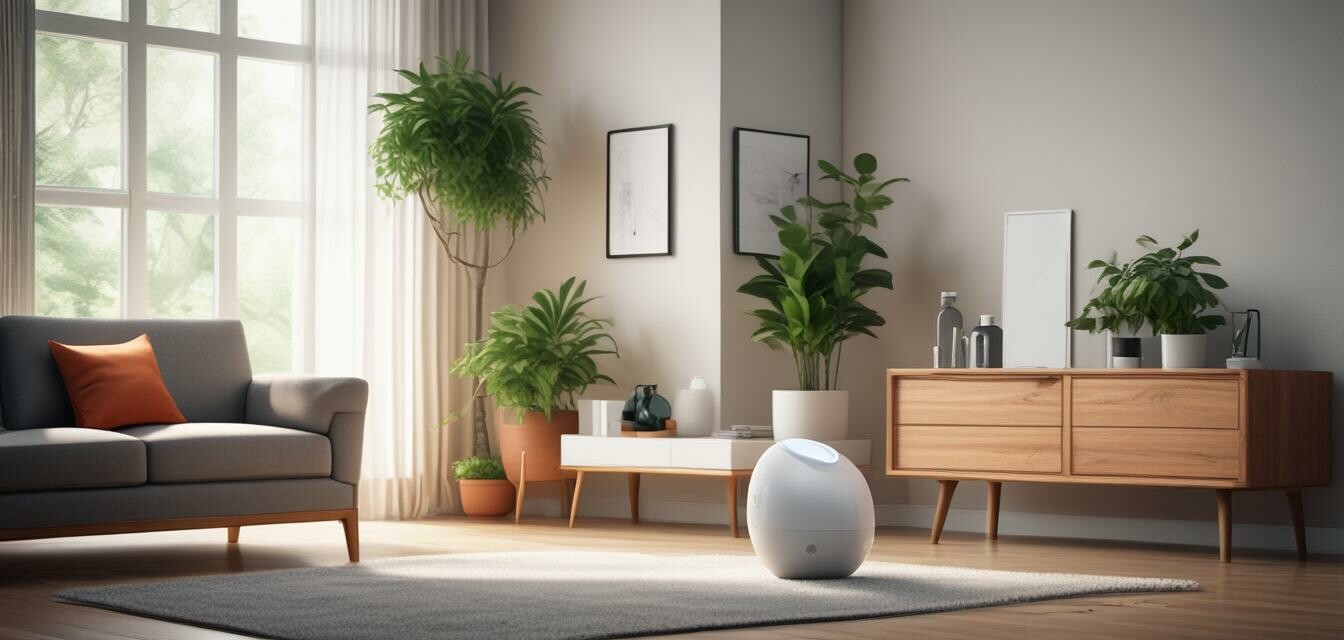
Smart Devices to Improve Indoor Air Quality
Key Takeaways
- Smart devices like air purifiers, humidifiers, and smart thermostats enhance indoor air quality.
- HEPA filters effectively capture allergens, smoke, and dust particles.
- Monitoring indoor air quality can be automated with smart sensors.
- Integrating smart devices can lead to energy savings and better health.
- Regular maintenance like replacing filters is crucial for optimal performance.
In today's fast-paced world, maintaining a healthy indoor environment is more important than ever. Poor air quality can lead to various health issues, making it essential to incorporate smart devices into your home for better air management. In this guide, we'll explore different smart devices that can significantly enhance your indoor air quality while keeping your home decor stylish.
The Importance of Air Quality
Indoor air quality (IAQ) refers to the condition of air inside buildings and homes. It can be impacted by various factors, including environmental pollutants, allergens like pollen and pet dander, and indoor activities that produce smoke or chemicals. Poor IAQ can affect your health and well-being over time, leading to respiratory issues, headaches, and fatigue.
Essential Smart Devices for Improving Indoor Air Quality
Smart devices can help you take control of your indoor environment by actively monitoring, cleaning, and purifying the air you breathe. Here are some essential devices that contribute to better indoor air quality:
1. Smart Air Purifiers
Air purifiers are one of the most effective solutions for removing contaminants from indoor air. They typically use various filtration systems, including HEPA filters, to capture particles and improve the quality of the air. Here’s a look at one particularly effective model:
MOOKA Air Purifiers for Home
This air purifier features an H13 True HEPA filter that captures smoke, dust, and allergens, ensuring clean air in large rooms up to 1076 sq ft.
Learn More2. Smart Humidifiers
Maintaining the right humidity levels in your home is crucial for optimal air quality. Smart humidifiers can automate humidity control based on your preferences or external weather conditions, helping to prevent issues like dry skin and respiratory problems.
Benefits of Smart Humidifiers
- Automatically adjusts humidity levels.
- Provides real-time monitoring through apps.
- Can reduce allergens like dust and pet dander.
3. Smart Thermostats
Smart thermostats not only manage your heating and cooling efficiently but also contribute to a more balanced indoor air quality. They can be programmed to run your HVAC system at optimal times, ensuring that air circulation remains consistent.
Smart Thermostat Features
- Remote access via smartphone.
- Energy usage reports for better management.
- Integration with other smart home systems.
Monitoring Indoor Air Quality
Investing in smart air quality monitors can give you real-time insights into the air conditions in your home. These devices can detect pollutants and allergens, alerting you when it's time to take action.
Air Quality Sensors
Air quality sensors can measure various particles in the air, including PM2.5, VOCs, and humidity levels. Some features include:
- Continuous monitoring and reporting via a connected app.
- Alerts for abnormalities or dangerous levels of pollutants.
- Data tracking over time for analysis.
Maintaining Your Smart Devices
While smart gadgets can significantly improve indoor air quality, regular maintenance is crucial for optimal performance:
- Change Filters: Most purifiers and humidifiers have filters that need replacement every few months.
- Clean Sensors: Ensure that air quality sensors are clean and placed in optimal locations.
- Stay Updated: Keep your devices updated with the latest software for efficiency.
Conclusion
Improving indoor air quality doesn't have to be complicated. By incorporating smart devices such as air purifiers, humidifiers, and thermostats into your home, you can create a healthier living environment. Not only will this enhance your comfort, but it will also ensure better well-being for you and your family over time.
Tips for Beginners
- Start with one device at a time and monitor the changes.
- Consider your room sizes when selecting devices.
- Integrate your devices to create a seamless experience.
- Use apps to control your devices remotely for added convenience.
